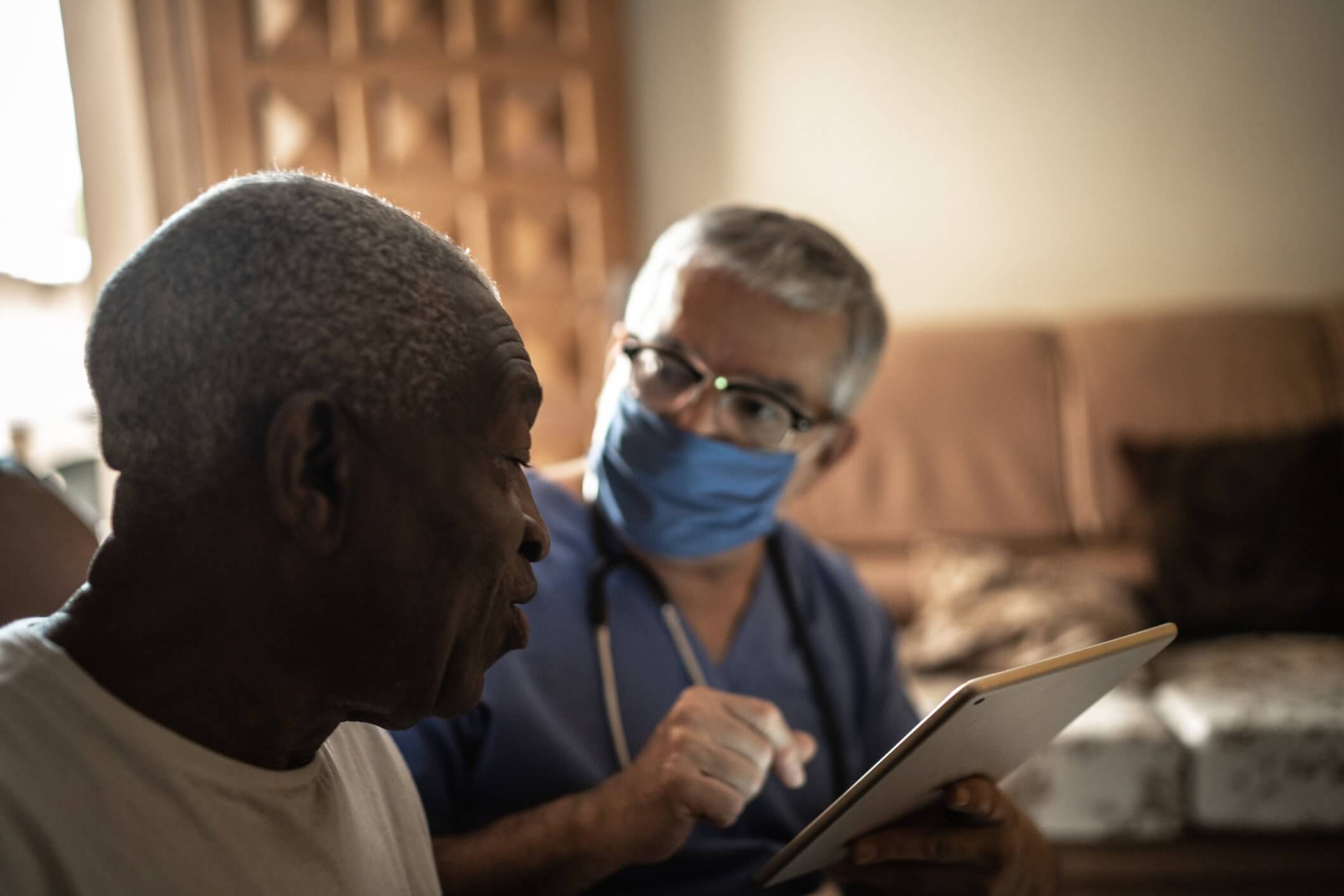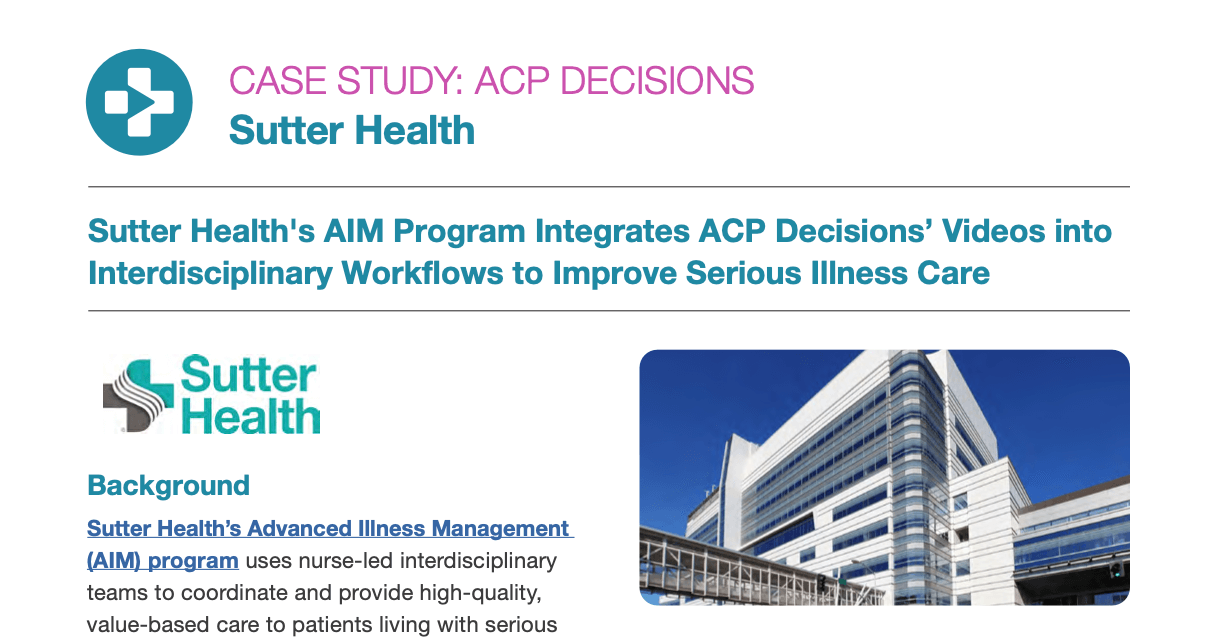IMPLEMENTATION | January 4, 2021
Goals-of-Care Conversations: Making the Most of Your Discussions
Reading Time: 4 minutes

Goals-of-care conversations are the best way to discover a patient’s health care wishes and ensure goal-consistent care. When executed well, these discussions elevate the clinician-patient relationship, opening the door to trust, open communication, and shared decision making.
In clinical practice, good communication techniques promote patient-centered care and are a cornerstone for conducting effective goals-of-care discussions. Studies have shown that good clinician-patient communication results in increased adherence to treatment plans, better data gathering and improved medical decision making. Patient-centered encounters correlate with higher levels of patient and clinician satisfaction.
Good communication skills can be learned, but they take practice. Polishing those skills are well worth it when it comes to making the most of goals-of-care discussions. Here are 5 best-practice communication techniques you can adopt:
Engage in Active Listening
Rather than controlling the discussion, listen actively to what the patient has to say in his or her own terms. Use open-ended questions to elicit the patient’s story and then give them time to answer without interrupting. When the patient is done speaking, , summarize what was said to ensure that you understand correctly.
Be Clear and Skip the Jargon
According to plainlanguage.gov, “jargon is unnecessarily complicated language used to impress, rather than to inform, your audience.” Taking the time to communicate clearly and explain things in a way that a patient can understand not only builds trust, it also facilitates a meaningful exchange of information. Learn more about how to communicate clearly with patients here.
Pay Attention to Non-Verbal Cues
Most experts agree that 70 to 93 percent of all communication is nonverbal. Nonverbal language, which includes eye contact, body position, facial expression, hand movements, gestures, and tone of voice, can convey underlying feelings or attitudes. Developing the ability to understand and use nonverbal communication will help you connect with patients and communicate with them more effectively. Learn more about nonverbal communication in medical encounters here.

Practice Cross-Cultural Communication
Following the RESPECT model will help you address potential cultural biases and promote more effective communication with patients from different cultural backgrounds. There are seven core elements to the model:
- Rapport – Building rapport is the process of establishing an emotional connection with your patient. This can be done by connecting on a social level, seeking the patient’s point of view, suspending judgement, and avoiding assumptions.
- Empathy – A 2016 study revealed that 65 percent of patient satisfaction was attributed to clinician empathy. In clinical practice, empathic communication involves remembering the patient has come to you for help; seeking out and understanding the patient’s rationale for his/her behaviors or illness; and verbally acknowledging and legitimizing the patient’s feelings.
- Support – Demonstrating your support for the patient is crucial to a strong therapeutic relationship. You can do this by asking about and trying to understand barriers to care and compliance; helping the patient overcome barriers; involving family members if appropriate; and reassuring the patient you will be available to help.
- Partnership – Collaborative communication is essential to a productive clinician-patient partnership. It should be a dynamic relationship based on a two-way exchange of information that results in care that aligns with the patient’s values and wishes. To achieve this partnership, strive to be flexible regarding issues of control; negotiate roles when necessary; and stress that you will be working together to address medical problems.
- Explanations – Help patients fully engage in conversations by checking often for understanding and using verbal clarification techniques.
- Cultural competence – Cultural competence is defined as “a set of skills, values and principles that acknowledge, respect and work towards optimal interactions between the individual and the various cultural and ethnic groups that individual might come in contact with.” When communicating with patients, this means respecting culture and beliefs; being aware of your own biases and preconceptions; knowing your limitations in addressing issues across cultures; and recognizing when your personal style may not be working with a given patient.
- Trust – Trust is the foundation of a strong therapeutic relationship, so it’s important to take the necessary time to establish and maintain trust. Keep in mind that self-disclosure may be an issue for some patients who are not accustomed to Western medical approaches include self-disclosure and may require a high level of trust may be needed before a patient feels comfortable sharing personal information.
Augment Conversations with Patient Decision Aids
From addressing different learning styles to improving information retention, patient decision aids can enhance the communication and shared decision-making processes. Video-based decision aids can support the care of seriously ill patients by fostering open discussions and empowering patient to make more informed medical decisions. Also, in the context of a pandemic, educational support tools regarding vaccination are critical to understanding. Learn how to incorporate patient decision aids into clinical practice here.
Brushing up on your communication skills will facilitate goals-of-care conversations, empower patients to share their story in their own way, and ultimately, improve your ability to provide honest, compassionate care for seriously ill patients and their families.
In part 1 of the Goals of Care Conversation series, we covered 3 steps clinicians can take to improve their skills and comfort level when it comes to goals-of-care discussions. In part 3, we will go through how to individualize goals-of-care and advance care planning conversations.
ACP Decisions develops evidence-based video decision aids that follow health care communication best practices to provide patients with information they can understand and use to make the best decisions for their health. Contact us to learn more!
You might also like...

Sutter Health’s AIM Program Integrates ACP...
CASE STUDIES, IMPLEMENTATION | < 1 MIN READ






